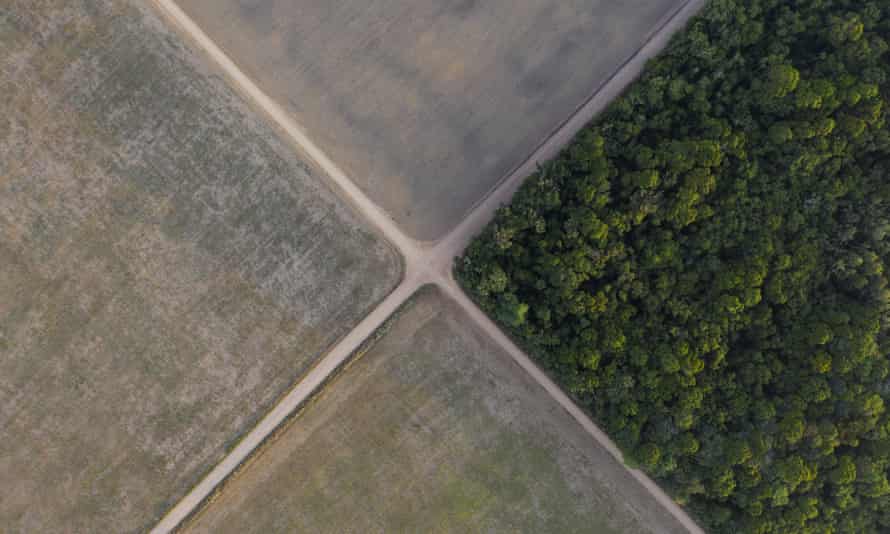The Amazon is now a net carbon producer, but there’s still time to reverse the damage
Brazil’s rainforest stores a huge amount of CO2. As it’s released at record rates, we may have passed a tipping point

The Amazon acts as a vital organ for our entire planet. The largest rainforest in the world, it provides an important function to both the Earth’s water and carbon cycles. The region, home to abundant and highly diverse species and ecosystems, houses more than 390bn trees. These have an exceptional capacity to recycle water by pumping it from the soil back up into the atmosphere, but also play a crucial role in storing carbon: the Amazon forest stores an amount of carbon equivalent to two to three times all the CO2 emitted by the UK since 1750. When trees die, either by natural causes or deforestation, this carbon can return to the atmosphere.
Until a study published in Nature this month by a group of Brazilian scientists revealed that the Amazon is now emitting a billion tonnes more carbon dioxide each year than it can absorb, the region was seen as an important carbon sink for the world. It took the lead scientist Luciana Gatti and her colleagues almost a decade of flying back and forth over the forest, collecting samples to be analysed for carbon dioxide concentration, at distinct altitudes and over different areas, from highly deforested to well-conserved ones, for scientists to realise that the game had changed: parts of the Amazon forest are now net carbon contributors.
Climate change, and at least four decades of deforestation and degradation of the Amazon following the installation of main roads that have expanded from south to north and east to west through the basin, have created a situation in which the Amazon is more open than ever to human destruction. The declining capacity of the forest, notably in its south-east, to uptake one of the main greenhouse gases, has a knock-on effect: reducing the rainforest’s own resilience to climate change and exponentially increasing the possibility of the climate reaching a theorised “tipping point”.
The synergic effects between a highly fragmented and degraded forest caused by decades of deforestation, logging and fire, and more frequent and intense drought events caused by climate change, generates the perfect condition for recurrent forest fires. The study shows that large pools of carbon are being emitted through such fires, especially in the north-east. This is clearly shocking and extremely worrying, but also surprising is the volume of carbon emitted by the remaining forest in the south-east. There, several years after the conversion to pasture, the remaining forest is acting differently to the other regions: the new landscape and climate mean the forest is changing its behaviour, with even standing forests inexplicably emitting carbon. The impacts of returning fires in the rainforest, which is a fire-sensitive ecosystem, include change in forest structure, reduction in carbon stocks, biodiversity and nutrient availability.
To restore the net carbon emissions of the Amazon forest to its balance and avoid other portions of the region’s forest reaching a tipping point where massive mortality further affects resilience, we must reduce forest loss by deforestation and fires, and invest in massive landscape restoration. Unfortunately, Brazil is taking a different route in relation to these major sources of carbon emissions. The country, which is the sixth largest greenhouse gas emitter in the world, has 44% of its emissions directly associated with land use change, mainly the conversion of forests to agriculture and pasture fields.
For decades, the so-called Amazon tipping point hypothesis has been predicting that once we reach 20% deforestation of the basin, the system would shift from a carbon sink to a carbon source. Now, the longstanding hypothesis has started to be confirmed, as we witness the destruction of great swathes of one of the most magnificent forests on Earth, into islands of trees within a sea of soy bean plantations and cattle ranches. Yet this Nature paper indicates that Brazil may be emitting much more than previously reported.
The chances of reversing this situation are becoming more distant by the day. There has been no investment in restoration by the federal government – and the rates of deforestation and fires have been reaching new heights month after month. This situation has been aggravated since Jair Bolsonaro took over the presidency. Enforcement agencies have been weakened and deauthorised, a problem compounded by a lack of direction and resources. Stakeholders including illegal loggers and miners have had their voices heard by the government over indigenous peoples and local communities. Ongoing changes in environmental policies, such as allowing mining in indigenous lands, formalising land titles on public lands occupied illegally, and loosening the environmental licensing process, continue to incentivise illegal activities, generating more deforestation and fire.
To change this situation, we must better implement enforcement to fight and inhibit illegal activities that cause deforestation and environmental crimes in the Amazon; provide positive incentives for sustainable use and good practices in forestry and agriculture; support indigenous peoples and local communities’ economies; increase transparency and traceability of Amazon products; and engage the private sector and international community in green financing and other environmental solutions.
From individuals to large organisations, we must boycott the products and initiatives that drive deforestation, and instead consume products and fund initiatives that keep the forest standing. If both the Brazilian and global societies don’t wake up to the importance of a healthy Amazon to the fight against the pervasive effects of climate change in the region, we will all lose out.
-
Ane Alencar is the science director of the Amazon Environmental Research Institute (IPAM), Brazil. Dr Adriane Esquivel Muelbert is a lecturer in global forest ecology at the University of Birmingham and Birmingham Institute of Forest Research (BIFoR)